Leather is undeniably a fantastic material choice for shoes. Not only does it exude a sense of timeless style, but it also offers a luxurious feel that is unmatched by other materials. Moreover, the durability of leather is truly remarkable, making it an investment that will stand the test of time.
So, if you’re ready to embark on this creative journey, join us as we guide you through the intricate process of dyeing leather shoes. Get ready to revamp your footwear collection and unleash your inner artist!
What is Dyeing Leather?
Dyeing leather is a meticulous process that involves transforming the color of leather material into a new and vibrant hue. This fascinating artistry can be achieved through the use of specially formulated dyes or leather paints, tailored to bring out the desired shade. The outcome of the dyeing process is heavily influenced by the type and quality of dye employed, as well as the technique employed to delicately apply it. It is worth noting that dyeing yields long-lasting results, ensuring that the new color adheres permanently to the leather surface, providing a durable and visually pleasing finish.[1]
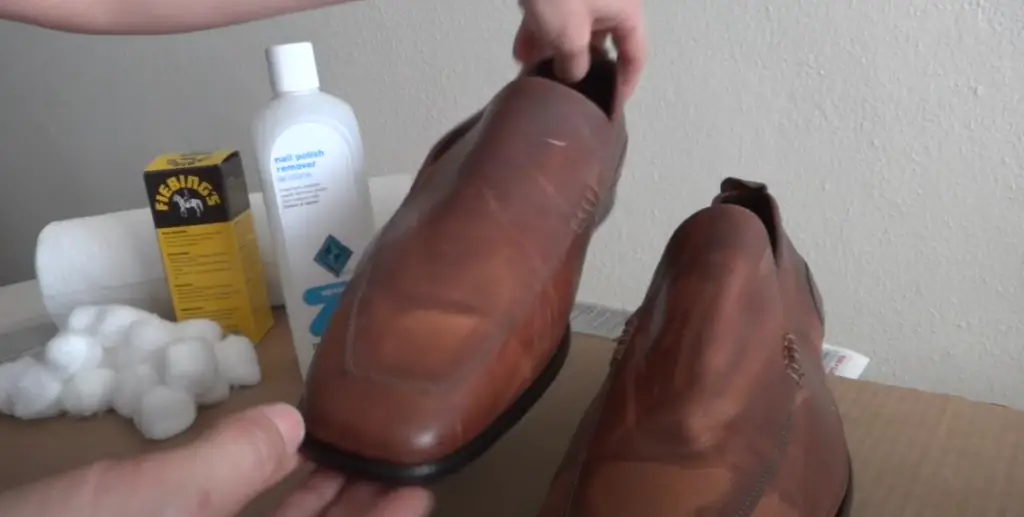
Why should you Dye Leather?
Dyeing leather provides an effective way to spruce up your beloved shoes. Whether you want to breathe new life into a well-worn pair of footwear or create something entirely unique and personal, dyeing can deliver the desired outcome. In addition, it is a cost-effective solution as compared to purchasing entirely new pairs of shoes, offering excellent value for money.
Moreover, dyeing leather allows you to experiment with bold and daring color combinations that can be customized to your own tastes and creative vision. Thus, it is a great opportunity for self-expression and style exploration.[1]
Materials
Cleaner/Deglazer
The first step of the dyeing process is crucial and involves thorough preparation of the leather material for application. To achieve an optimal outcome, it is recommended to use a specialized cleaner or deglazer specifically designed to strip away any residue from previous treatments. This meticulous cleaning process ensures that the leather surface is left clean and thoroughly prepped for the dye. When applying the cleaner or deglazer, it is best to use a soft cloth and gently move in circular motions. This technique guarantees that all areas of the leather are covered evenly and completely, creating a smooth and receptive surface for the dye to adhere to. Taking the time to properly prepare the leather material sets the foundation for a successful and long-lasting dyeing result.[3]
Leather Dye
Once the leather is cleaned and deglazed, it is time to select the perfect dye that best suits your artistic vision. Leather dyes come in a multitude of colors and can be purchased both online and from various stores. It is important to note that the type of dye employed will greatly affect the outcome of the dyeing process. Thus, it pays off to conduct proper research to understand the different dye options available and consider which one is best suited for your desired outcome.[3]
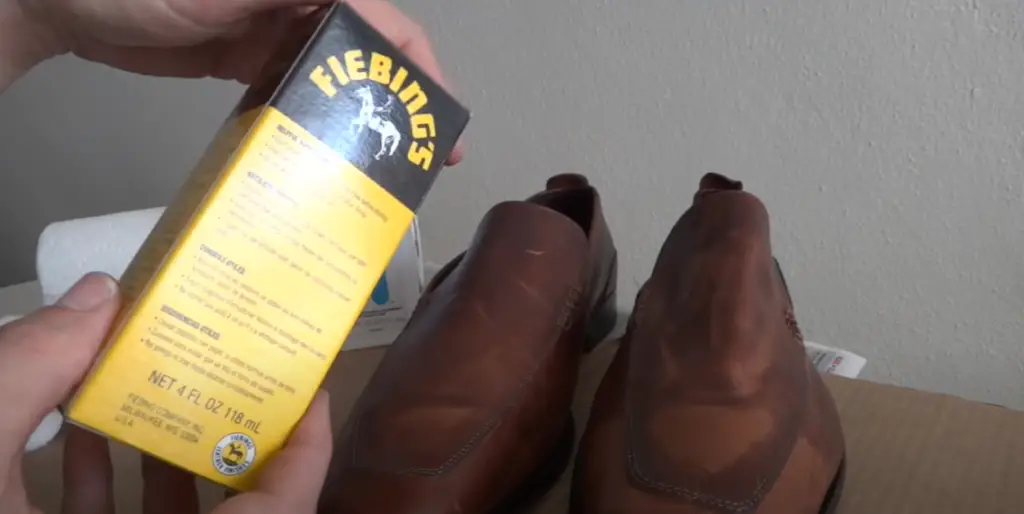
Shoe cream and/or wax polish
After the leather dye has been skillfully applied and allowed to dry, it is absolutely essential to protect the material with a high-quality shoe cream or wax polish. This crucial step not only acts as an additional layer of defense against stubborn dirt and various forms of wear and tear but also serves to nourish and condition the leather, ensuring its longevity and durability. By meticulously caring for your shoes in this way, you not only safeguard their pristine appearance but also enhance the vibrancy of the new color, making them stand out and remain fresh for an extended period of time. So, remember to give your beloved shoes the attention they deserve, and they will reward you with unmatched style and longevity.[3]
Applicators
The precision and accuracy necessary for successful dyeing require the use of various specialized applicators such as foam brushes, sponges, and/or paintbrushes. Each applicator should be carefully chosen according to the dye type selected and the desired outcome. For example, a foaming brush would be ideal for achieving a soft finish when applying liquid dyes, whereas a sponge would be better suited for achieving a more textured and varied look when applying leather paints. Taking the time to select the ideal applicator can make all the difference in yielding a successful dyeing result.[3]
Method
Tape off any areas you don’t want to dye.
To avoid any unwanted dyeing mishaps and achieve a professional-looking result, it is always prudent to take precautions and cover areas of the shoe that you do not want to be included in the dyeing process. This can be easily done by using a high-quality tape, such as painter’s tape or masking tape, to securely fasten and protect those specific areas. By doing this beforehand, you ensure that only the intended portions of your beloved footwear receive the desired dye color, resulting in a clean and even finish that showcases your attention to detail and craftsmanship.[2]
Removing old shoe polish and factory finish.
In order to achieve optimal results during the dyeing process, it is crucial to remove the existing factory finish or shoe polish from the leather material. This is necessary as any remnants of the previous color can negatively impact the adherence of the new dye. To accomplish this, it is recommended to utilize a specialized cleaner specifically designed for leather. Apply the cleaner onto a soft cloth and gently rub the surface in circular motions. This meticulous process ensures that all traces of the old polish are completely eliminated, creating a clean canvas for the dye application. Once this step is completed, it is crucial to allow the leather to thoroughly dry and ensure that it is completely free of any residue. Taking these extra measures will help to guarantee a successful and long-lasting color transformation for your leather goods.[2]
Preparing and mixing colors.
Before commencing the dyeing process, it is important to understand which color combinations and shades can be achieved with the type of dye selected. To ensure a satisfying outcome, take the time to conduct thorough research on how different dyes react together and what kind of colors can be mixed to create your own personal palette. Once you are familiar with this information, measure out the necessary amounts of dye and mix them together in a separate container to create your ideal color. It is important to remember that different dyes will react differently when mixed, so be sure to take your time and experiment with various combinations until you achieve the desired shade.[2]
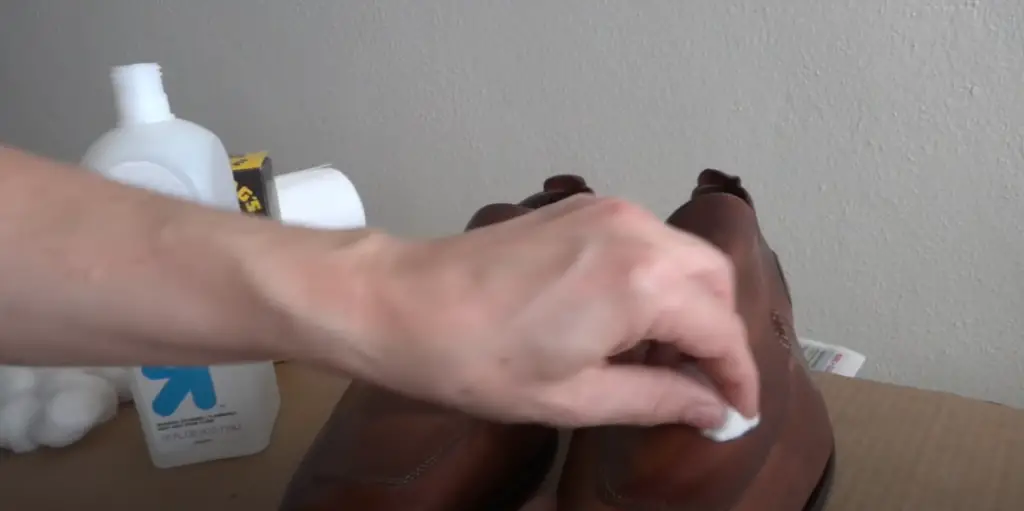
Then it’s time to die.
At this point, you are all set to begin dyeing your leather goods. With confidence and precision, carefully apply the dye using a specialized applicator as discussed earlier in the article. It is important to note that when applying dye it is best to do it in an even motion so that the color can permeate through the entirety of the leather surface. If multiple colors are used, it can be beneficial to begin with the lighter shade and gradually move towards the darker ones. Once you have finished applying the dye, allow a few moments for it to dry completely before beginning any additional steps. Taking this extra precaution will ensure that your hard work and craftsmanship truly shines through in the end result.[2]
Conditioning the leather.
To protect the leather and make sure that the dye adheres securely, it is necessary to condition it. This can be achieved by applying a high-quality leather conditioner with a soft cloth or brush in circular motions. The conditioning process serves to nourish the material and serve as an additional layer of protection against dirt and wear-and-tear, while also helping to enhance the vibrancy of the dye. So, remember to condition your freshly dyed leather goods and they will stay looking as good as new for many years to come.[2]
Shining and color corrections.
The final step in the dyeing process is to carefully shine the leather and make any necessary corrections to the color if needed. Use a high-quality shoe polish or wax with a soft cloth or brush in circular motions, ensuring that you reach every corner of the shoe. This will bring out the true vibrancy of your new color and make sure that it shines for all to admire. If, after shining the leather you notice any slight discrepancies in color, make sure to address these as soon as possible by adding small amounts of additional dye or leaving it out if necessary. This ensures that your new shoes look perfect and reflect a professional level of craftsmanship.[2]
Remove the tape.
With the color transformed and shining, like a vibrant work of art, it is now time to carefully remove the tape that was previously used to protect any areas from unintentional dyeing. By delicately peeling off the tape, you’ll reveal a masterpiece of craftsmanship, achieving a flawless and polished look. This meticulous process ensures a seamless transition between the beautifully dyed portions and those that remained undyed, resulting in a truly remarkable and refined finish. Once all of the tape has been lovingly removed, your leather goods will be ready to dazzle and make a stylish statement wherever you choose to wear them. Prepare to turn heads and leave a lasting impression with your impeccable taste and attention to detail.[2]

High gloss finish and waterproofing.
To add the finishing touches to your dyeing masterpiece, it is recommended to apply a high gloss finish and waterproofing solution to your leather items. This will help ensure that the color remains in pristine condition for many years down the line, while also providing protection from dirt and water damage. Applying just a small amount of this solution should be sufficient, so make sure not to over-apply it as this can negatively impact the vibrancy of the dye. Now your shoes are ready to take on the world in style and grace![2]
Considerations for DIY Leather Dyeing
When attempting to dye your own leather goods, it is important to keep some things in mind. First, remember that different dyes and materials will react differently when exposed to certain elements or conditions. So always research the type of dye and leather being used thoroughly before beginning any kind of work on them. It is also highly recommended to practice on a scrap piece of leather before attempting to dye anything important, as this will help familiarize yourself with the process and ensure that you get your desired outcome in the end. Finally, always use protective gloves when handling dyes or other chemicals to avoid any potential harm or irritation to your skin. Keeping these tips in mind will guarantee a successful and safe dyeing experience for all involved.[1]
Advantages of Dyeing Leather Goods
Dyeing leather goods is not only a great way to add a personal touch and style to your wardrobe or home decor, but it also allows you to create something truly one-of-a-kind. By carefully selecting the color and dyeing technique, you can enhance the natural beauty of the leather and bring out its unique characteristics. The process of dyeing not only adds vibrancy to each piece but also provides an extra layer of protection against dirt and wear-and-tear, ensuring that your leather goods will stand the test of time. Moreover, the art of dyeing adds a touch of sophistication, making your leather items suitable for any formal occasion or special event. With a little bit of creativity, patience, and attention to detail, you can transform ordinary leather into something truly remarkable and extraordinary, showcasing your personal style and craftsmanship. So, why not dive into the world of leather dyeing and unleash your creativity to create something truly special?[1]
Disadvantages of Dyeing Leather Goods
While there are many advantages to dyeing leather goods, it is important to also consider the potential drawbacks. One of the biggest disadvantages is that the process can be time consuming and requires careful attention and a steady hand in order to achieve perfect results. It can also be difficult to ensure that the color remains consistent throughout different parts of the item or between multiple items if you are dyeing several items at once. Moreover, due to the delicate nature of leather goods, there is a chance that the materials may shrink or crack if not treated correctly. Finally, dying leather could be expensive and require certain specialty tools if not done properly. Considering these possible drawbacks will help you ensure that your dyeing project is successful and without any unpleasant surprises.[1]
More Tips for Dyeing Leather Goods
Although dyeing leather goods may seem intimidating at first, it is actually a relatively straightforward process. To make sure that your project is a success, here are some key tips for getting the best results:
- Always use high-quality dyes and leather care products to guarantee long-lasting results.
- Make sure to do a patch test before applying the dye to the entire item, as different dyes may react differently depending on the material.
- Always use gloves when handling dyes and other chemicals to avoid any skin irritation.
- Before applying the dye, ensure that all pretreatment steps have been done correctly. This includes cleaning and conditioning the leather, removing any excess dirt or oils from the surface, and testing the dye on a small area.
- Allow enough drying time for the dye to set properly before any additional steps are taken.
- Consider using shoe polish or leather conditioner after dyeing process is complete in order to protect and preserve the color of the leather goods.[1]
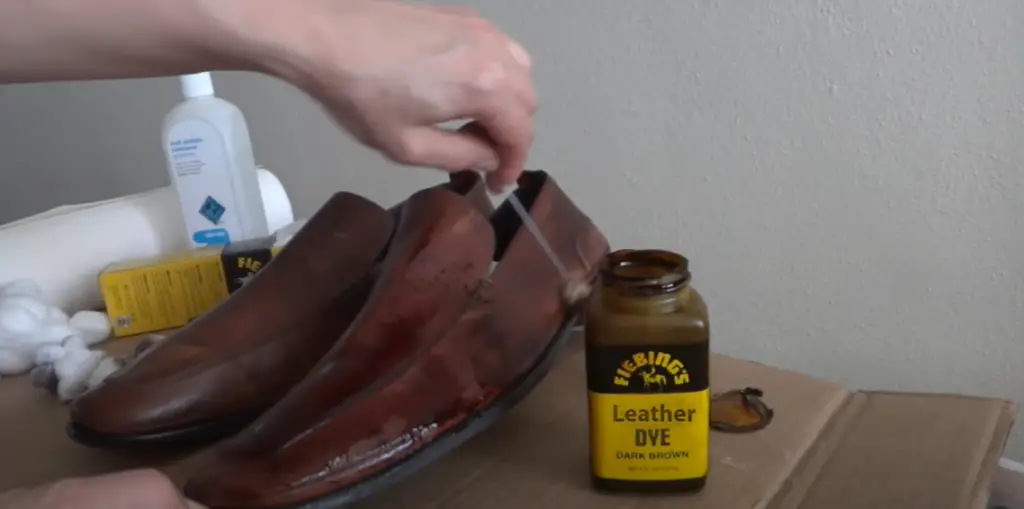
FAQ
What is the best dye for leather shoes?
The best dye for leather shoes will depend on the type of leather you are working with. Some dyes are made specifically for certain types of leather, so it is important to research and select one that is suitable for your project. In general, aniline and oil-based dyes are often used in shoe dyeing as they provide excellent colorfastness and help to protect the leather from damage.
What do you need to dye leather shoes?
The supplies needed for dyeing leather shoes will vary depending on the type of dye and specific project. Generally, you will need a high-quality leather dye, pre-treatment products (like cleaners and conditioners), gloves to protect your skin when handling chemicals, an applicator such as a brush or sponge, and possibly some wax or polish to finish off the job.
How can I dye my shoes at home?
Dyeing your shoes at home is a relatively straightforward process. First, prepare the leather by cleaning and conditioning it with a suitable pre-treatment product. Then, apply the dye evenly to the shoes using an applicator such as a brush or sponge. Once you have applied all of the dye, allow it enough time to dry before applying any protective wax or polish. Following these steps should help you achieve beautiful results!
Can I dye leather shoes myself?
Yes, it is possible to dye leather shoes yourself. It is important to understand the basics of leather care and dyeing techniques in order to achieve great results, however. Be sure to research the type of leather you are working with and practice on a scrap piece before attempting anything important. With some patience and attention to detail, you should be able to successfully dye your leather shoes and create something truly unique.
Is it better to paint or dye shoes?
Whether it is better to paint or dye your shoes will depend on the type of material and desired aesthetic. Generally, painting is best for synthetic materials as it provides a more vibrant color and greater coverage than traditional dyes. Leather, on the other hand, usually responds better when dyed as opposed to painted because it can be difficult to achieve even coverage with paint alone.
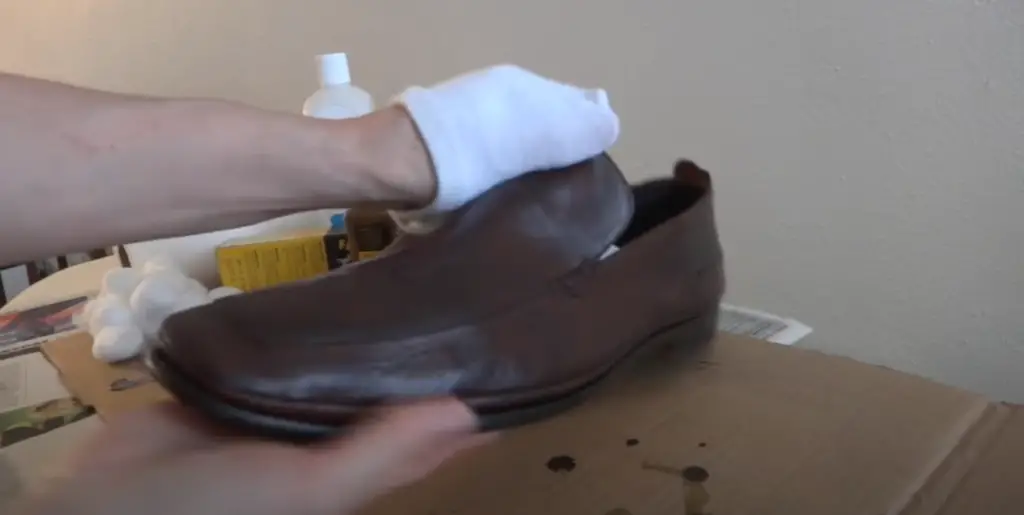
Can you permanently dye leather?
Yes, you can permanently dye leather. Generally, aniline and oil-based dyes are the most suitable for this purpose as they provide excellent colorfastness and help to protect the leather from damage. However, it is important to make sure that pre-treatment steps have been completed correctly in order to guarantee long-lasting results. Additionally, using wax or polish to finish off the job can help preserve the color of your leather goods.
How long does leather dye last?
The longevity of leather dye will depend on a variety of factors including the type of material you are working with, the quality of dye used, and how well it was applied. Generally, using high-quality dyes and taking extra care when applying can help ensure that your results last for several years. Additionally, protective wax or polish can help to preserve the color even further. At the end of the day, proper care and maintenance are key for getting long-lasting results.
Does leather dye actually work?
Yes, leather dye can be very effective for creating beautiful and lasting results. By following the correct steps and using high-quality dyes, you should be able to achieve great results with minimal effort. Additionally, protective wax or polish can help to preserve the color of your project even further. With some patience and attention to detail, leather dyeing can produce stunning results!
Useful Video: How to Dye Leather Shoes
Conclusion
Dyeing leather goods can be a great way to add unique flair to your wardrobe. By following the correct steps and using high-quality dyes, you should be able to achieve beautiful results with minimal effort. Always remember to do a patch test beforehand and use gloves when handling chemicals in order to avoid any skin irritation. Additionally, protective wax or polish can help to preserve the color of your leather goods. With some patience and attention to detail, you should be able to successfully dye your leather shoes and create something truly unique!
References:
- https://www.americanduchess.com/pages/how-to-dye-leather-shoes
- https://www.papernstitchblog.com/shoe-win-how-to-dye-leather-shoes-like-a-pro/
- https://www.theshoecareshop.com/pages/how-to-dye-leather-shoes

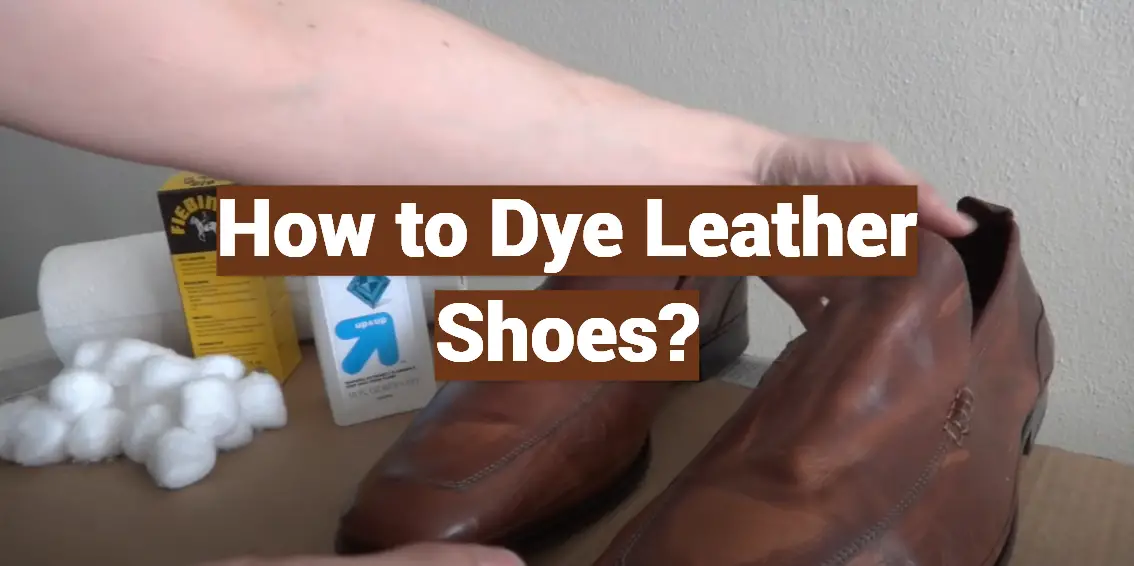





Leave a Reply